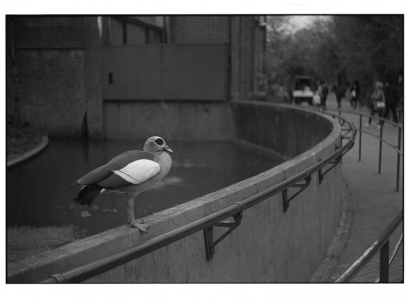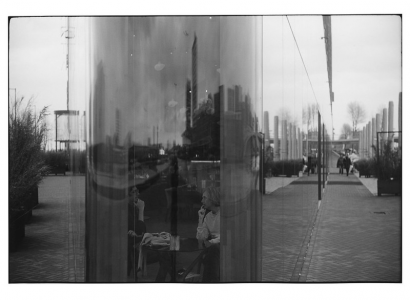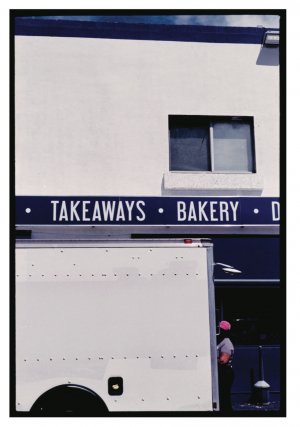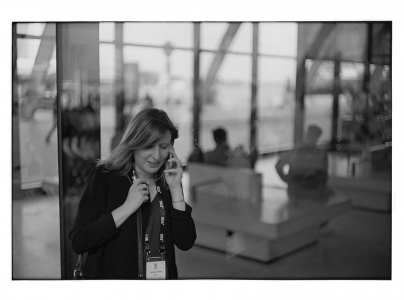Freakscene
Obscure member
Thanks for pointing that out Raid, I meant the 35mm Summicron-R. The Summilux flares a bit more, but is mostly better corrected.Do you mean the Summilux-R or the 35mm Summicron here?
I've edited my post to remove blathering.
Ororaro
Well-known
Erik van Straten
Mentor
I like the Noctilux 50mm f1 v1 too, but the problem with that lens is that at full aperture the corners stay very dark. Another problem is its weight.I have a black paint v1 Summilux. I like it a lot, but flare resistant is not what I would call it. The main lens flare tests that I use to assess a lens for my use are photos with:
- point sources of bright light near but inside the edge of the frame
- point sources just outside the frame but shining on the front element
- a large bright area like that window you showed above, but just outside the frame, with a dark subject and low-key photo
- a photo of a bird on a wire or squirrel or similar on a branch against a bright sky
The f1 Noctilux was by far the best on film. Everything fails some test or another on digital, at least everything I have tried so far. It is very interesting how many great lenses fail test 3. The Leica ASPH lenses mostly do badly, even stopped down a bit, and even the Summicron-R 35mm, which is a very flare resistant lens, fails it badly, despite not flaring when you point it at the sun or a stage light. I may be able to figure out why, but I find what a lens does is more important for my photography, particularly when design and construction are not things I can change.
The colour of the coating is often not indicative of its composition; it is mostly indicative of its thickness, and for multi-coating, which wavelengths are least well controlled for reflection. It can also change with a <1% alteration in composition, including of contaminant compounds that are still within spec.
There is a good description of the basics of coating here: Camera Lens Anti-Reflection Coatings: Magic Explained
This shot too is with the black paint Summilux 50mm f1.4 v1; earlier I've said inadvertently it was with the collapsible Heliar 50mm f2:
gelatin silver print (summilux 50mm f1.4 v1 black) leica m2

Last edited:
Erik van Straten
Mentor
chuckroast
Established
In the US, it's pretty much freely possible to photograph someone in any situation where the person "has no reasonable expectation of privacy". France, on the other hand, has really repressive laws in this regard.gelatin silver print (summilux 50mm f1.4 v1 black) leica mp
full aperture
Amsterdam, 2019
View attachment 4837450
What are the Dutch laws about photographic people in public?
raid
Dad Photographer
I was told that in Spain you need to ask the person for permission before taking a photo of that person in public. My guess is that a similar rule is there in Holland.
Erik van Straten
Mentor
I think the rules here are the same as in the US. Now, with all those people walking around with digital telephones, it is impossible to enforce strict rules on photographing people.In the US, it's pretty much freely possible to photograph someone in any situation where the person "has no reasonable expectation of privacy". France, on the other hand, has really repressive laws in this regard.
What are the Dutch laws about photographic people in public?
cboy
Well-known
I always thought the 50 cron v5 was a bit large for a 50mm M on my Leica as I always had on a standard filter which made it look bulky for my taste. But after using the eins filter it makes it less so and more appropriate for every day carry.
These days a Leica is less conspicuous as you'd think. So for me the small the better. Horses for courses.
These days a Leica is less conspicuous as you'd think. So for me the small the better. Horses for courses.
Erik van Straten
Mentor
Try a screw-mount. Nobody nowadays sees that as a working camera. Take a black Leica lll, prewar. Incredible camera.I always thought the 50 cron v5 was a bit large for a 50mm M on my Leica as I always had on a standard filter which made it look bulky for my taste. But after using the eins filter it makes it less so and more appropriate for every day carry.
These days a Leica is less conspicuous as you'd think. So for me the small the better. Horses for courses.
gelatin silver print (summar 50mm f2) leica lll black
Amsterdam, 2020

Rob-F
Likes Leicas
For looks alone, it seems hard to tell from my version 3, which I find very comfortable to hand hold and use. I'd probably feels just the same way as you (if I had a version 5). Nice shot! Cool Citizen! Is that a power reserve indicator?I have tried alternatives, Zeiss, Voigtlander all probably just as good or very close, but I have nothing that holds in the hand as nice as the current 'Cron 50mm lens. Built in hood with just the right amount of give. Whether in or out, it just stays that way. The lens is sharp as a tack. This is a forever lens, I'd say.
View attachment 4837195
Ko.Fe.
Lenses 35/21 Gears 46/20
I had tiger claw which is in reality beaver tail version.
Focus shifts, awful veiling. And plastic aperture part.
It was sterilized lens on bw film, very boring.
I didn't keep it for long.
Switched to v3 and it was better.
Focus shifts, awful veiling. And plastic aperture part.
It was sterilized lens on bw film, very boring.
I didn't keep it for long.
Switched to v3 and it was better.
Benjamin Marks
Mentor
I am always a bit leery of jumping into threads like this. Given that I don't have very strong opinions, why would anyone be interested?
I have a DR 50 and a Rigid from the same era, also a collapsible 50 Summitar, a 50 Summarit, a 1980's Canadian Summicron, and a not-quite-last-generation Summilux. What makes my opinion annoying (in my view) is that they are all pretty good and have different uses, depending on their specific qualities. I have never noticed focus shift, don't shoot to produce flare, and don't really find them to have any objectionable qualities.
The 50 was my go-to focal length (or the one I left my house with, mounted on the camera as default) for decades. To me, it seems like the changes in the Summicron models have more to do with advances in lens coating technology over time than with changes in the lens design per se. So the later models are snappier/higher contrast, but not necessarily sharper in a way that matters for my photography all that much. Also, older coatings were softer, resulting in scratches and (potentially) lower contrast. Finally older lenses are, well, old. They might need a bit of careful cleaning to get them back to haze-less, dust-less new-ish condition. I suspect that we make too much of the minor differences between lenses on a forum like this.
Of course, that's not all true. My DR and Rigid were apparently hand-fitted, front cell to rear, and had/could have slightly varying nominal focal lengths as a result. Mine have the focal length noted in pencil on the separte cells, a feature I find charming as it is a link to the craftsman who had his hands on the lens during manufacture. And when I got my Canadian 50, it stayed bolted to my camera for years as my only reasonably contemporary 50 and it was giving me results I loved. I got the older Summicrons (DR, Rigid) later based on comments here that they would change my life. They didn't. Although they are nice lenses and I use them.
In the mirrorless, digital age, we now see another realignment. For one thing you can test one lens against another without waiting to develop and then print, so feedback (and comparison) to the photographer is much more "real time." For another, diffferences in contrast may matter less as we have lots of digital adjustments for that. (Veiling flare is different issue, I think).
In the final analysis, I choose the lens that I think is going to give me the qualities I want in the final picture. But there is no universal choice for me, given my own photo preferences.
I have a DR 50 and a Rigid from the same era, also a collapsible 50 Summitar, a 50 Summarit, a 1980's Canadian Summicron, and a not-quite-last-generation Summilux. What makes my opinion annoying (in my view) is that they are all pretty good and have different uses, depending on their specific qualities. I have never noticed focus shift, don't shoot to produce flare, and don't really find them to have any objectionable qualities.
The 50 was my go-to focal length (or the one I left my house with, mounted on the camera as default) for decades. To me, it seems like the changes in the Summicron models have more to do with advances in lens coating technology over time than with changes in the lens design per se. So the later models are snappier/higher contrast, but not necessarily sharper in a way that matters for my photography all that much. Also, older coatings were softer, resulting in scratches and (potentially) lower contrast. Finally older lenses are, well, old. They might need a bit of careful cleaning to get them back to haze-less, dust-less new-ish condition. I suspect that we make too much of the minor differences between lenses on a forum like this.
Of course, that's not all true. My DR and Rigid were apparently hand-fitted, front cell to rear, and had/could have slightly varying nominal focal lengths as a result. Mine have the focal length noted in pencil on the separte cells, a feature I find charming as it is a link to the craftsman who had his hands on the lens during manufacture. And when I got my Canadian 50, it stayed bolted to my camera for years as my only reasonably contemporary 50 and it was giving me results I loved. I got the older Summicrons (DR, Rigid) later based on comments here that they would change my life. They didn't. Although they are nice lenses and I use them.
In the mirrorless, digital age, we now see another realignment. For one thing you can test one lens against another without waiting to develop and then print, so feedback (and comparison) to the photographer is much more "real time." For another, diffferences in contrast may matter less as we have lots of digital adjustments for that. (Veiling flare is different issue, I think).
In the final analysis, I choose the lens that I think is going to give me the qualities I want in the final picture. But there is no universal choice for me, given my own photo preferences.
Last edited:
Share:
-
This site uses cookies to help personalise content, tailor your experience and to keep you logged in if you register.
By continuing to use this site, you are consenting to our use of cookies.



